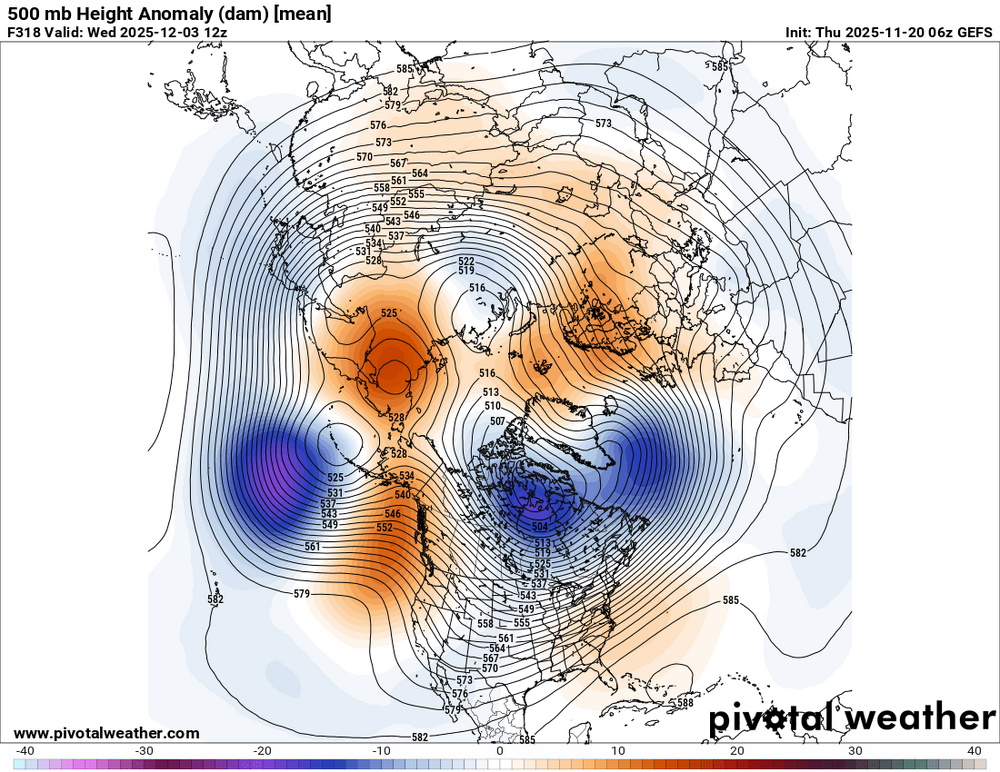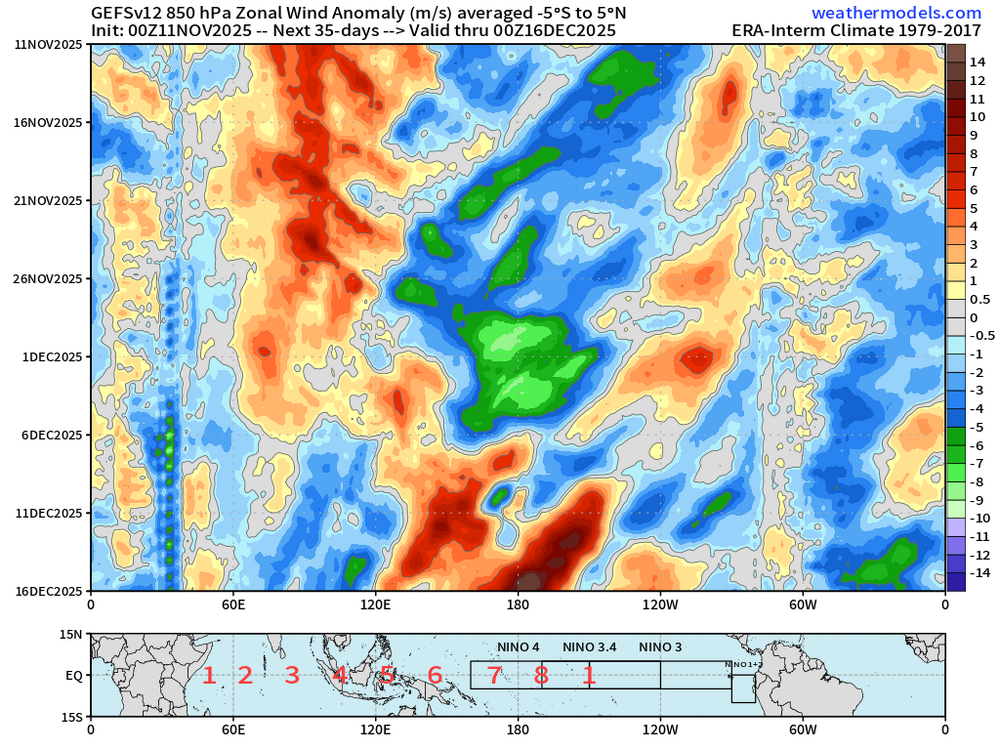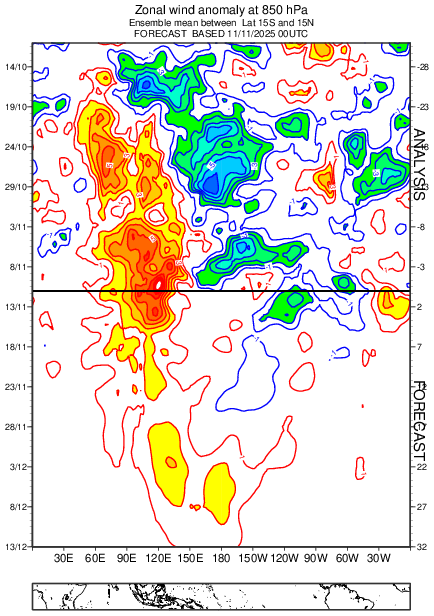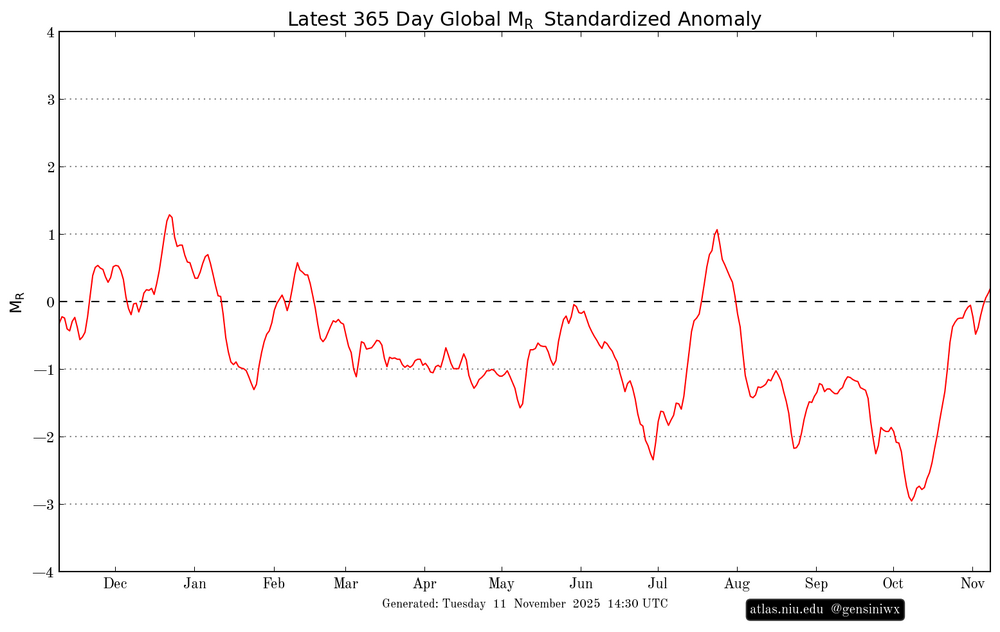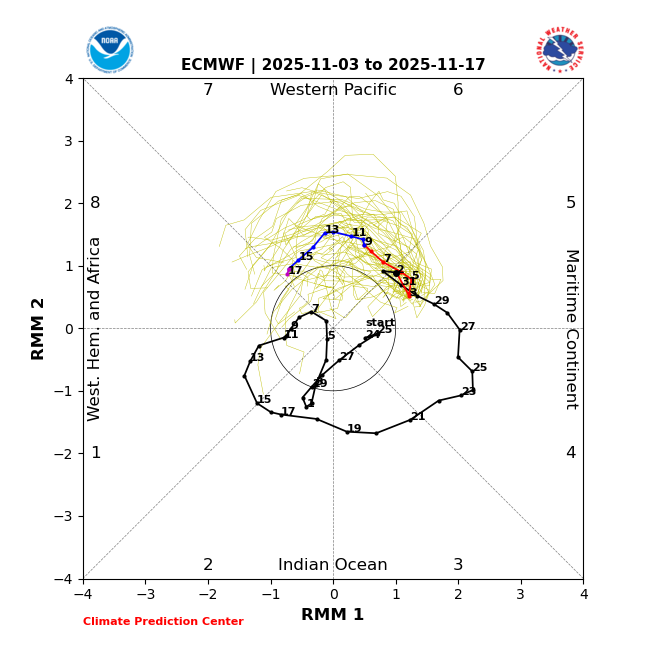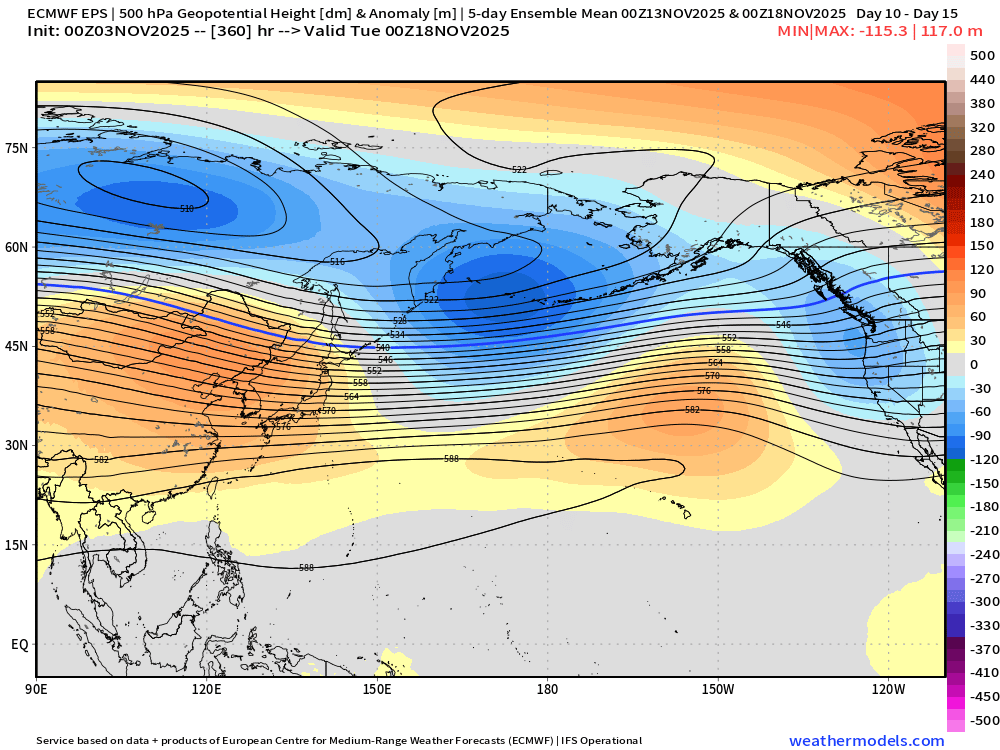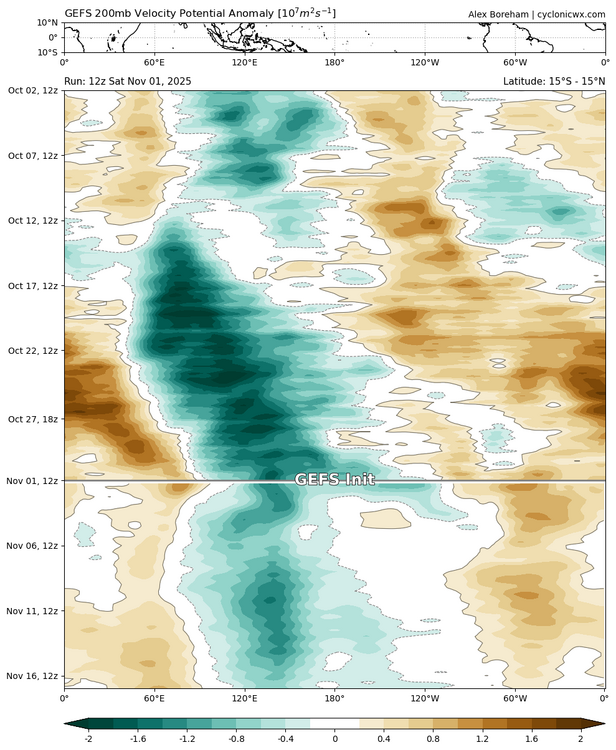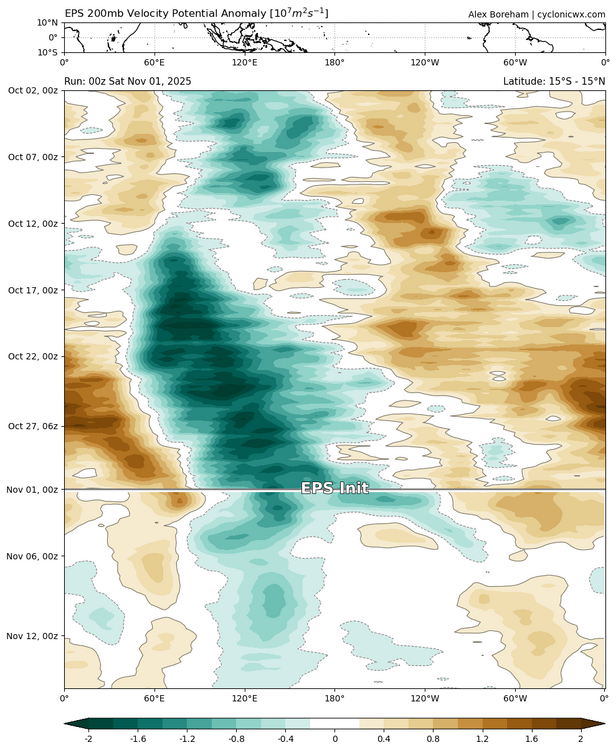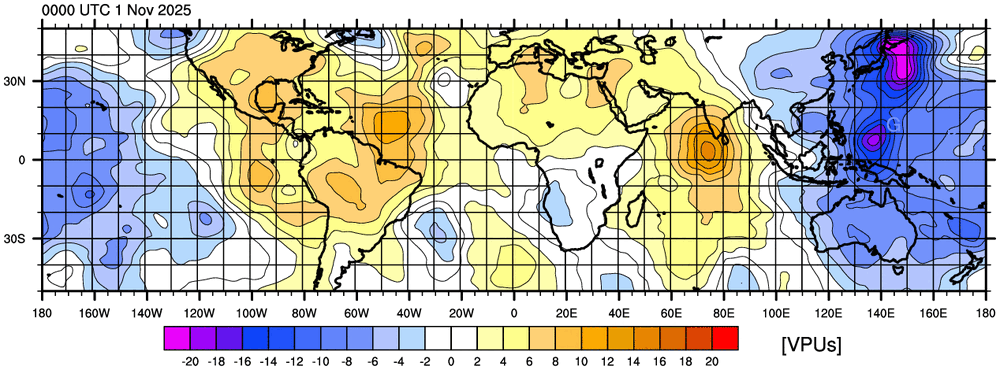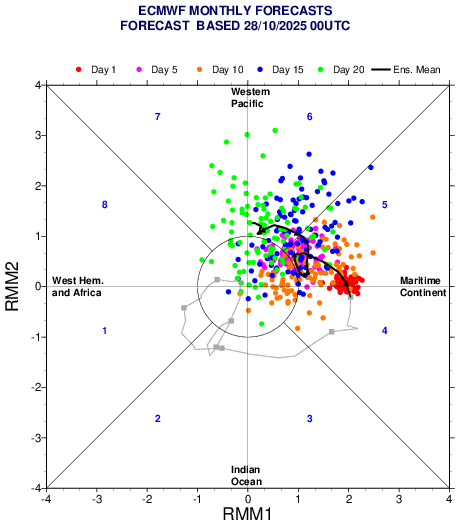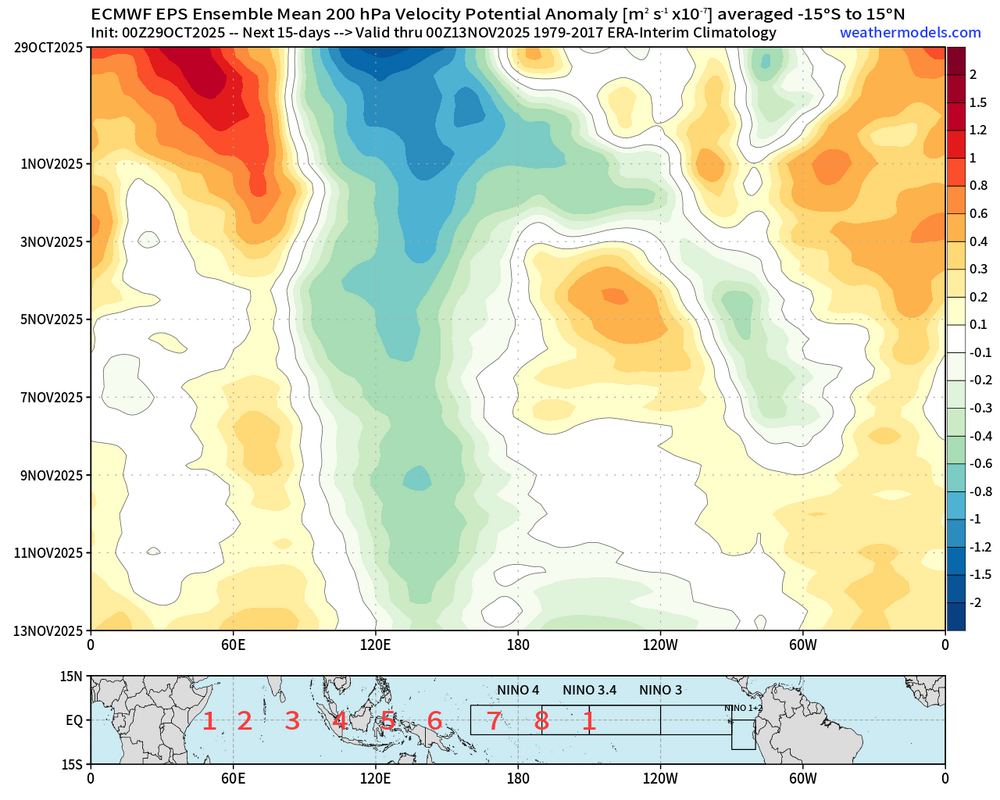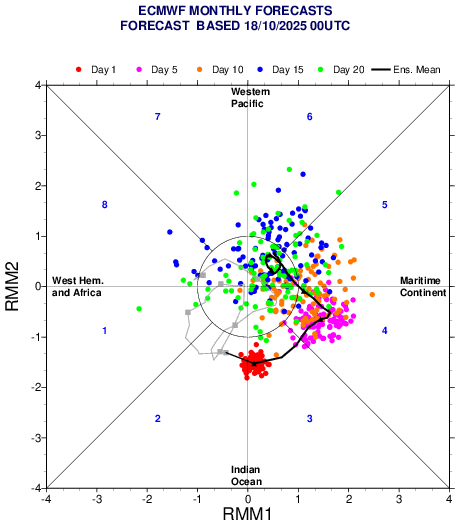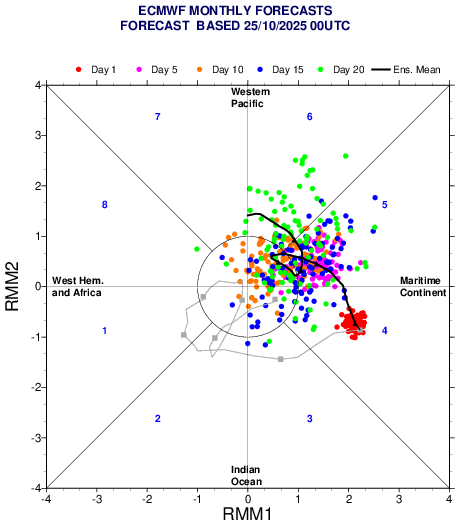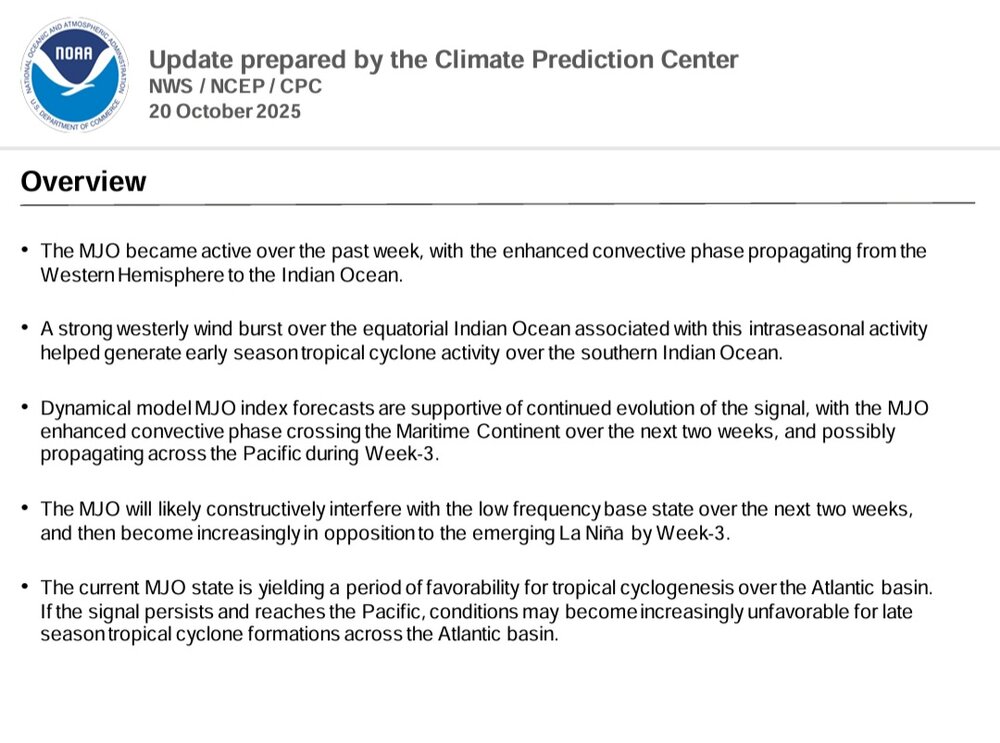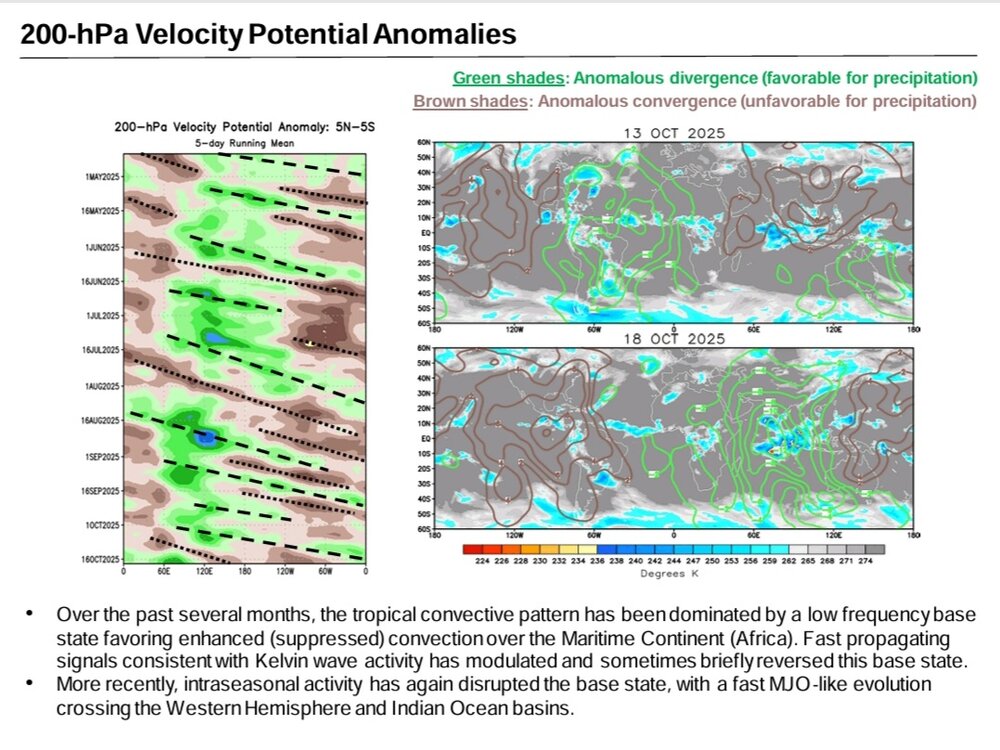-
Posts
3,404 -
Joined
-
Last visited
Content Type
Profiles
Blogs
Forums
American Weather
Media Demo
Store
Gallery
Everything posted by EasternLI
-
I made some quick markups on the chart from the 6Z GEFS to better illustrate what you're seeing on those charts. This ties in to the post I made a couple of days ago regarding kelvin waves and the mjo signal. The true Phase 8 attempt will be right near mid month. Just out of range still but closing in. Effectiveness remains to be seen of course. Notice on this also how the la nina influence re-emerges in between passing kelvin waves causing the loops on those charts.
-
Really good recent paper here when considering this stratosphere wave reflection event. I feel like this influence is taking control of things for a bit. And models are trying to resolve this influence. As it does fit in with what we're seeing, and what models are doing. Which, if it is, then begs the question. What takes over once the life cycle runs its course? And when? Since the end dates apparently vary (but are typically ~2 weeks) and aren't very well understood. It's interesting. Probably a future case study. Dynamics of stratospheric wave reflection over the North Pacific https://wcd.copernicus.org/articles/6/521/2025/
-
Nice post man. You know that I agree with this assessment. We've had some good chats about this occasionally in past years. It's a real factor and should be considered into the equation. Having said that. I don't think we should rush to judgement yet on this particular MJO event and I'll try to explain why. This event thus far has been driven to propagate eastward with CCKW's. Which operate due to different circumstances from the MJO and with much faster timescales. Since the beginning of this event really, they've been noticeable in the data and the models. I mentioned this phenomenon in a post here last month I think too. This is still the case on current runs. We've been seeing this alternating constructive and destructive interference cycling through the event as they do. Which is presenting itself as the loops around on the RMM charts we've been seeing. It was slowed, naturally, as it approached the La Nina state in addition to that as well. However, it seems to want to persevere on the longer range guidance. Regular ensemble runs (gefs/eps) don't run out far enough to capture the whole picture. What we've been seeing with those is an amplified trend when there is constructive interference. Mixed with other times where the signal almost vanishes when there is destructive interference from these CCKW's. The latest one is about to constructively interfere, which is offering some boost to the Phase 7 signal upcoming. Some here seem to be under the impression that the phase 8 attempt is within range of the current medium range ensembles. I think that is a mistake. Any signal giving that impression should be the current CCKW continuing to propagate through to the east. So what I think will happen, is that we will see the amplification into phase 7 as guidance is advertising. Followed by a degradation which will be denoted once again with the RMM chart doing a loop with the signal again. IMO the actual attempt for the push into phase 8 comes a little after that. With the next CCKW that should propagate through and is modeled to do so. If guidance is any indication, that should occur close to mid month in December IMO. Outside of the range of current gefs/eps runs. We'll probably see a more ambiguous signal until that time. Much like the later stages of the 12z GEFS posted right below. It could in fact fail and possibly for the reasoning that you've laid out very nicely here. Personally I think the jury is still out for this one, but that they will enter the building around mid December to prepare the verdict. Such as euro (and gefs for that matter) weekly data suggests. Today's euro weekly forecast at the very bottom. Today's Euro weeklies VP200 followed by U850:
-
Just think this is cute from the GEFS at 12z. After the PV discussion earlier. Now it shows up with a rather stout looking Scandinavian/Greenland dipole at the end of this run. Nice.
-
It's actually a little bit interesting, the way things are unfolding for the PV. Having previously seen the wave 1 tropospheric precursor pattern (displacement). In the weeks prior. Followed by the displacement event we've all been monitoring in the stratosphere now. Now, looking at some ensemble runs moving forward. We're resembling something pretty close to the wave 2 precursor (split). Which, if we take into consideration what looks to be a meaningful phase 7 mjo transit upcoming (known for PV disruption). Plus the associated WWB mentioned out at the dateline. That should act to give another boost to the AAM. If I'm recalling correctly, split events are typically achieved with a wave 1 attack (preconditioning) followed up by wave 2. Added all up raises an eyebrow a little bit. I'll just add, "setbacks" (or vice versa) from a European perspective doesn't necessarily equal the same to someone in the US for anyone reading.
-
Fair enough. However, the example you were using was displaying basically the textbook la nina phase 7 response. We'll see how it goes. Another thing for consideration. The waters in that area of the globe have cooled significantly since last year. First image below is the difference between now vs 1 year ago. Enough so, that it's mostly near normal now in the equatorial band (10N-10S). With a non insignificant area having below normal temps even for a change (2nd image). A sight for sore eyes. So perhaps that factor can be muted this time.
-
Well, yeah. It would take a little time to imprint on the circulation. Perhaps it's only one run but it was the same one. I would have expected to see some differences on the model if there were interference with the signal. Totally agree with you regarding phase 8. We'll definitely want to see the suppressed phase center itself over 120E to achieve the proper effectiveness IMO.
-
I don't know. That doesn't look very significant. Where is the said difference? This is that same eps run as posted and these look basically like a carbon copy, to me.
-
Gotta watch this. If you pop a poleward Scandinavian ridge here that suggests further damage to the PV sometime in December.
-
Remains to be seen if we can achieve phase 8. Still a little bit too far in the future for guidance, but this year... maybe? There's been somewhat of a notable trend on the EPS over the last couple of days now with the mjo. Incrementally amplifying the phase 7 transit through several runs. With today's 12z run the most amplified thus far. I bring up the EPS since it's been the one piece of guidance that has been the most reluctant with this event throughout. Here are yesterday's 00z run followed by the latest 12z EPS 200mb velocity potential (the ones in between follow the same trend). 00z yesterday: 12z today: Taking a global view of this now, in the 10-15 day mean. It's a fairly clear phase 7 signature being shown now on the 5 day mean. With the suppressed phase pushing into the MC and the enhanced phase pushing into South America. Again, this signal has been growing. Not fading away, much like we are all accustomed to in recent times, as verification time approaches. Consistent with the slower moving mjo events, as mentioned earlier in this thread. There should be a response reflected in the 500mb pattern. Or at least more likely. So I like to check the model output against the mjo composites in times like these. Since that is most certainly not always the case. In this instance though, there do seem to be at least several similarities between the phase 7 December La Nina composite. When compared with the 12z EPS forecast at day 15. Which, to me, suggests it is indeed being effective. At least in the model. What happens from here? I'm beginning to think it might be interesting to find out.
-
Yeah, that will be interesting to watch evolve. Extended range EPS and GEFS are advertising this WWB to push out to the dateline. Which has proven difficult to do in other recent La Niña years. So I'm curious to see how this one goes as we move into December.
-
-
I've been occasionally browsing these myself. Nice of him to provide an explanation here of how it works/what it does/what it's doing.
-
Its interesting times when there's potential to see an amplified MJO in the Pacific. Then firing off an +EAMT into that. Especially given the time of year...
-
-
-
There are perhaps some clues to keep an eye on in the context of this. As whatever happens higher up in the atmosphere is strongly tied to the progression in the troposphere. Namely, keep an eye on what transpires in the north Pacific. There's a great paper on these events and why they occur in both el nino and la nina. I'll post below figure 1 from this paper along with the explanation given for the image. Also of note, some of the recent ensemble runs have been showing some similarities to the precursor 500mb later in the runs. I'll add the 00z EPS from last night after that for example. I suspect the amount of members achieving the ssw have been the ones with a deep north Pacific low in their progression in the proper location. Not saying one happens, only that there seems to be a valid reason for some of those members to be showing it. Why might stratospheric sudden warmings occur with similar frequency in El Niño and La Niña winters? https://agupubs.onlinelibrary.wiley.com/doi/full/10.1029/2012JD017777 Last nights 00z EPS - note this is a 5 day mean
-
Curious to see how the mjo behaves this week. Eps dampens the wave as it has been throughout. Gefs is more amped. But, both of those things are known biases of each respectively as far as I know (lol). In real time thus far the Gefs has been verifying better (stronger). That doesn't necessarily mean that will continue though. Nobody knows for certain, we watch. Looking forward to the CPC update on Monday. For now here's Gefs and eps forecasts followed by the current map. There does appear to be kelvin wave like feature visible too on these charts, slicing through the overall mjo signal at faster speed. Those have been a catalyst in propagating this event thus far according to other CPC updates. How well are they modeled?
-
Yeah I agree it will likely trend that way too in this instance. Gefs guidance can overdo it sometimes too though. So I've been kinda focused on euro guidance to see if it would trend more amplified. And it has been which is good to see. Yesterday's weeklies were another good step too. Avoiding the circle completely that run with some amplified members too.
-
Some good trends this morning... and an interesting thought. Improvement on the EPS from last night also. Which has been much weaker with this event compared to others. Still very much worth watching.
-
Generally not a fan of the RMM MJO charts. However, I think these euro weekly ones are beneficial. Mainly to visualize what the individual members are doing inside the mean and for trends. IMHO, not sure how anyone can call what happens with this event currently with any confidence. Still think it's too early. With that being said, lets look at the trend over the past week wrt this event. EC 46 one week ago versus today's forecast. A few things are noticeable. The verification vs the forecast from a week ago has been much higher in amplitude. With verification higher than the highest ensemble members forecast. The mean which was spiraling off into the COD is no longer doing so with a signal into the Pacific now. Also interestingly, later in the forecast period, there are many more members with renewed amplification in the Pacific now on today's run which just updated. This is still worth watching... One week ago: Today:
-
Theoretically, according to some studies, to have the best chance of a successfully propagating MJO event beyond the MC. There are 2 main factors to consider. Indian Ocean temps and the QBO. With the combination of a warm Indian Ocean combined with an EQBO offering the highest chance for success. Understanding the Factors Controlling MJO Prediction Skill across Events https://journals.ametsoc.org/view/journals/clim/37/20/JCLI-D-23-0635.1.xml The results show that the low-frequency background states of the Indian Ocean sea surface temperature and the quasi-biannual oscillation are good indicators for MJO prediction skill, for their modulatory role in the MJO propagation range. The difference in intraseasonal fields can further be attributed to the LFBS of IO sea surface temperature (SST) and quasi-biannual oscillation (QBO), with the high-skill (low-skill) events corresponding to a warmer (colder) IO and easterly (westerly) QBO phase. The physical link is that a warm IO could increase the low-level convective instability and thus amplify MJO convection over the IO, whereas an easterly QBO phase could weaken the Maritime Continent barrier effect by weakening the static stability near the tropopause, thus favoring eastward propagation of the MJO. It is also found that the combined effects of IO SST and QBO phases are more effective in influencing MJO prediction skill than individual LFBS.
-
-
Intuitively, makes sense and I agree. The MC is a tricky area for convection though and can play games sometimes. We'll see what modeling trends decide to do with it over the coming days. I suspect it will make it as well, but we'll see.
-
The AAM is set for a rapid rise towards neutral. After having fallen to strongly negative values. The cause of this will be the addition of momentum from the upcoming pacific jet extention in conjunction with the MJO event. How this plays out should have an effect further down the road. The MJO is modeled differently on different systems currently. The EPS AI ensembles have been pretty robust with it. Ideally, we'd like to see the negative AAM anomalies propagate poleward to 60N over time. If so, there could be some actual potential for early winter northern blocking. Towards December perhaps. I'll be interested to see how this plays out..


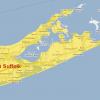
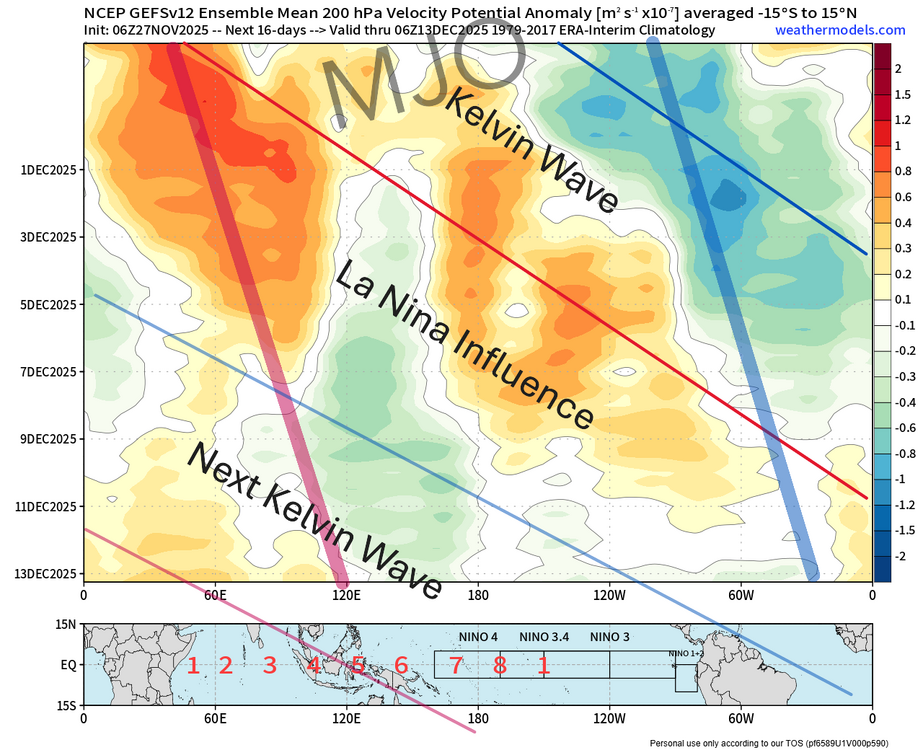


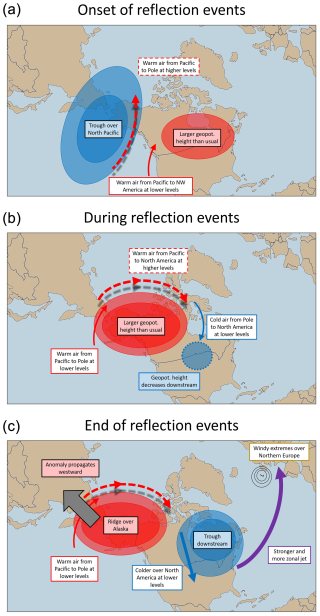
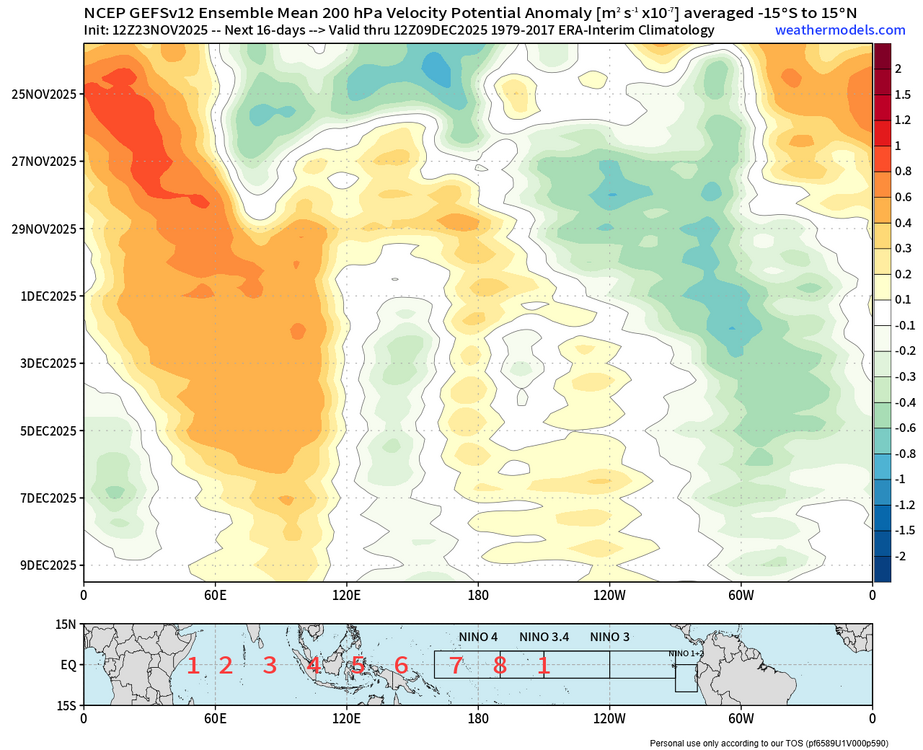
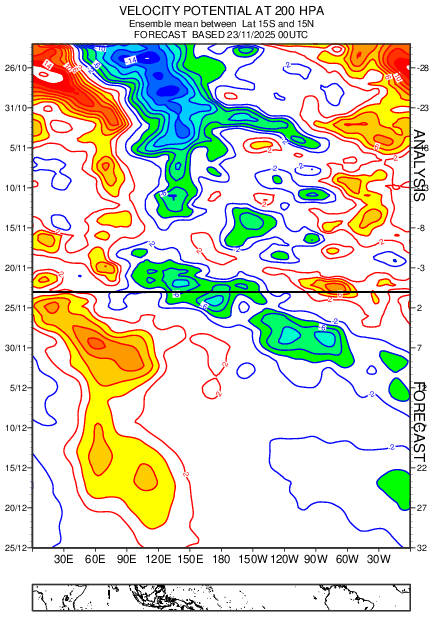
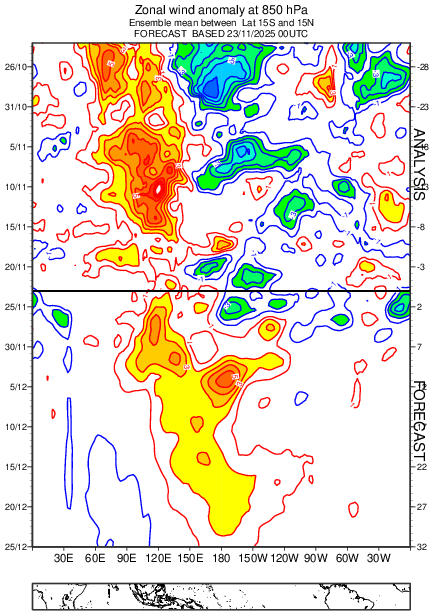
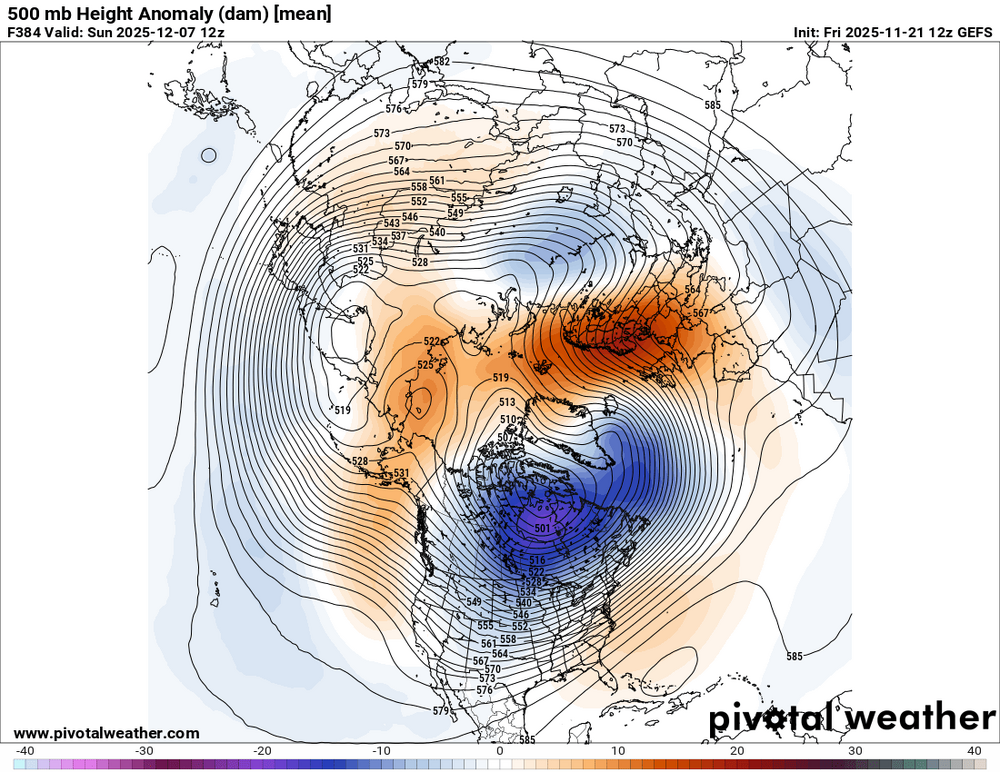
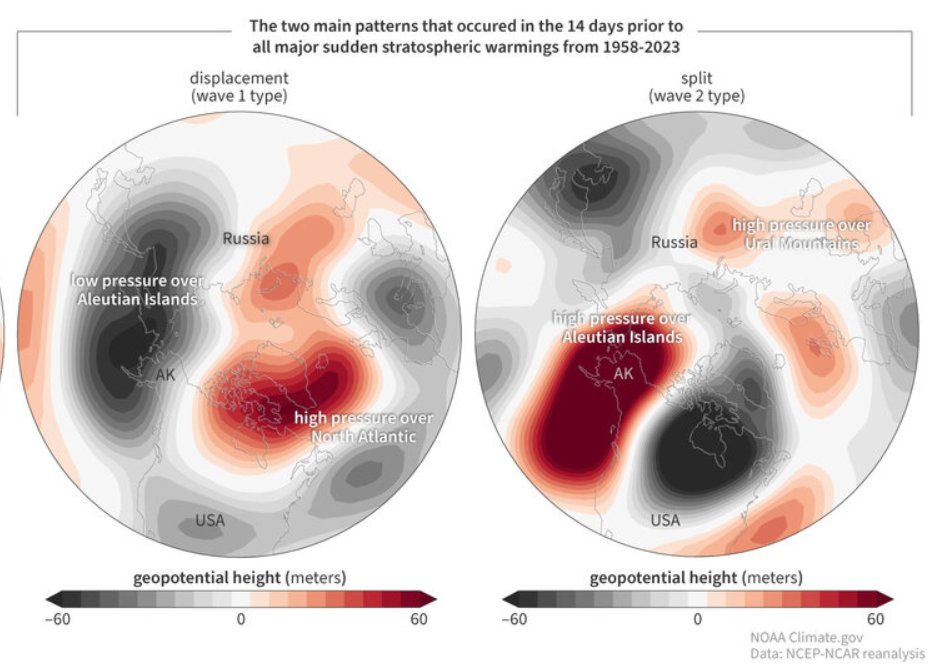
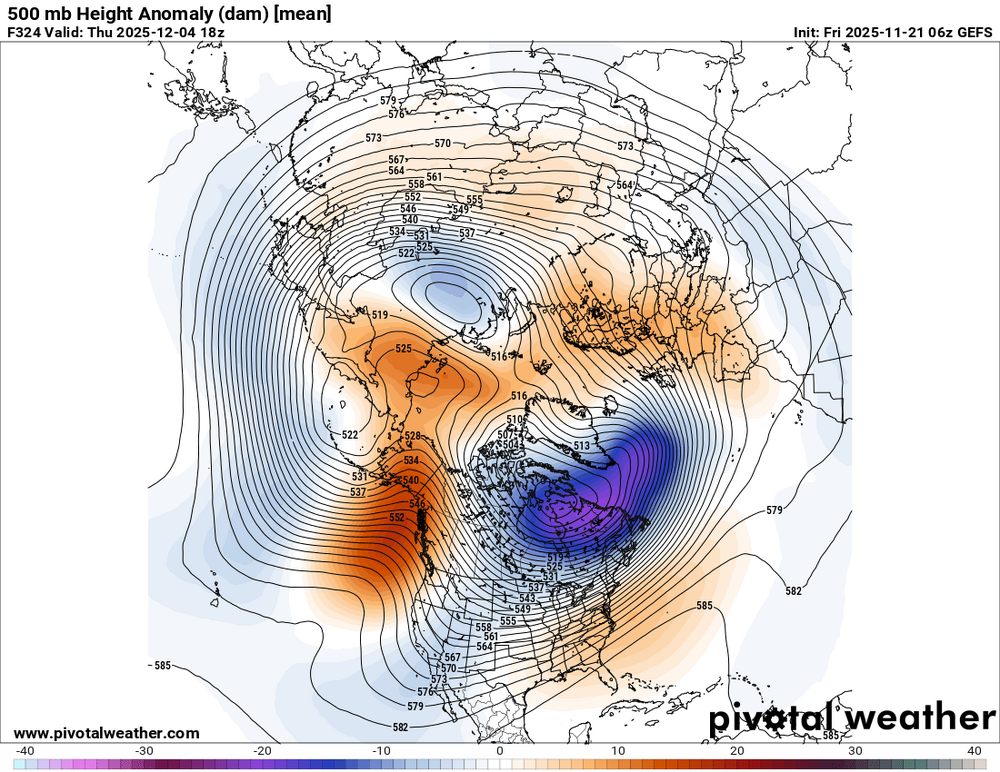
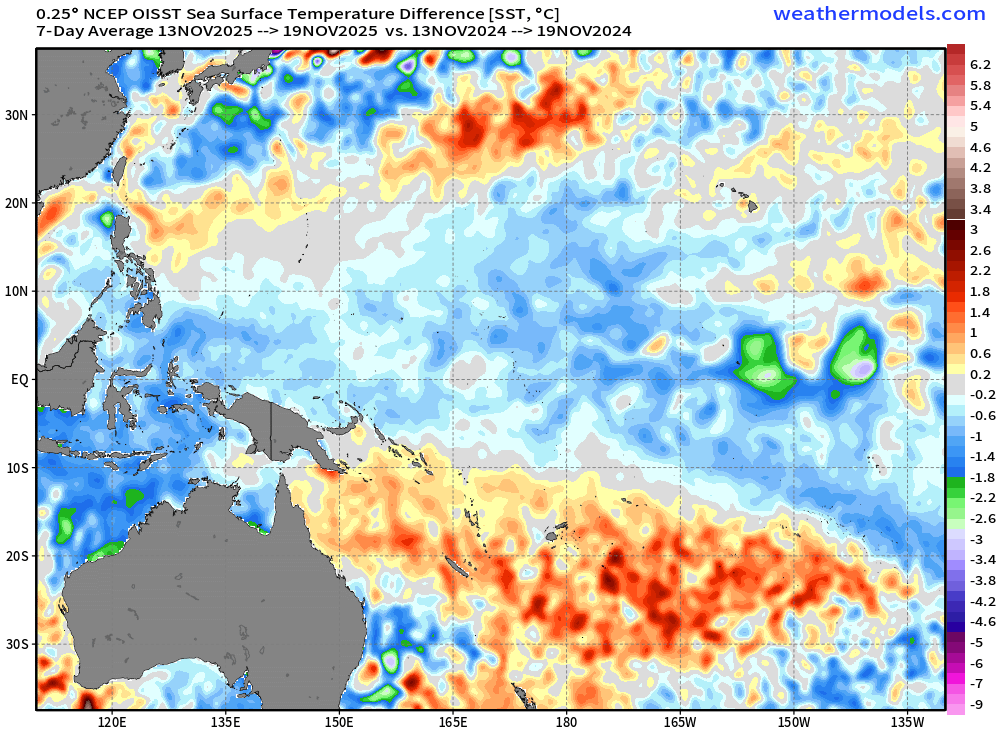
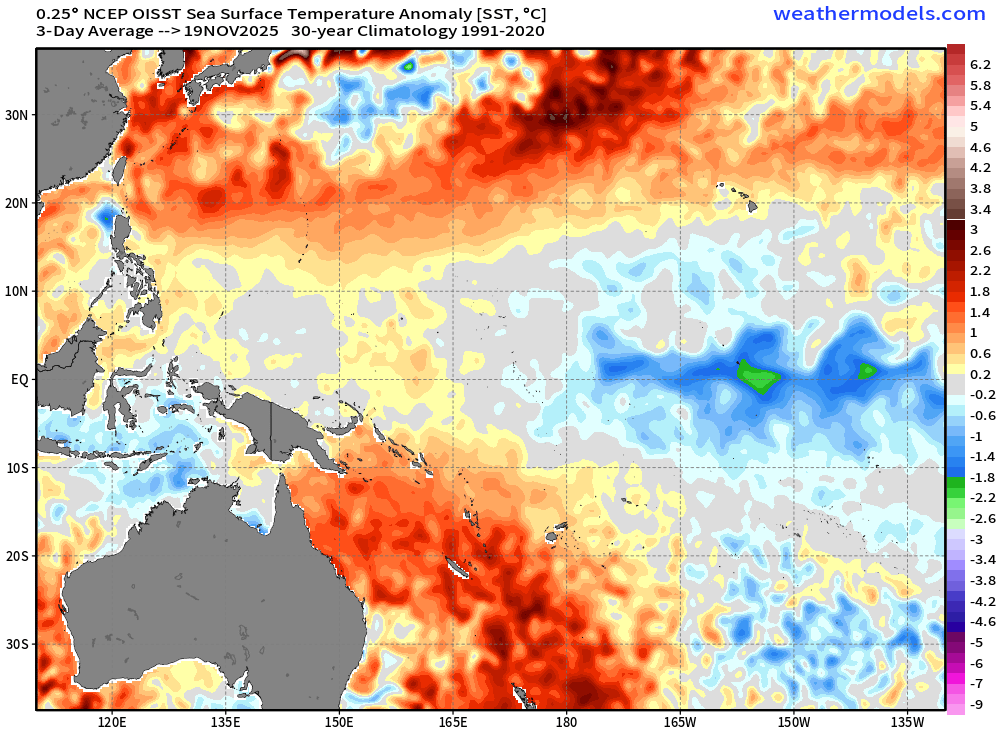
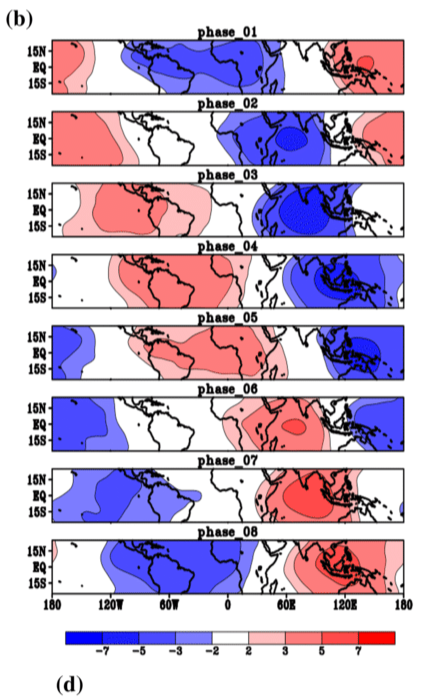
.png.9346241d3750ced6a47649ca3937de59.png)

